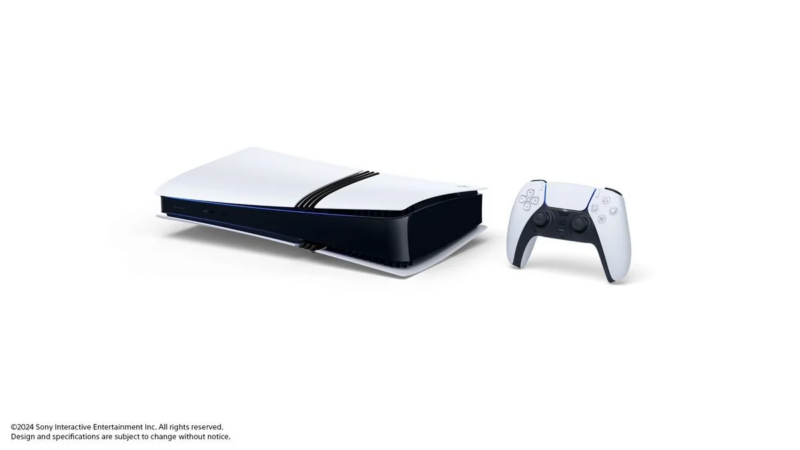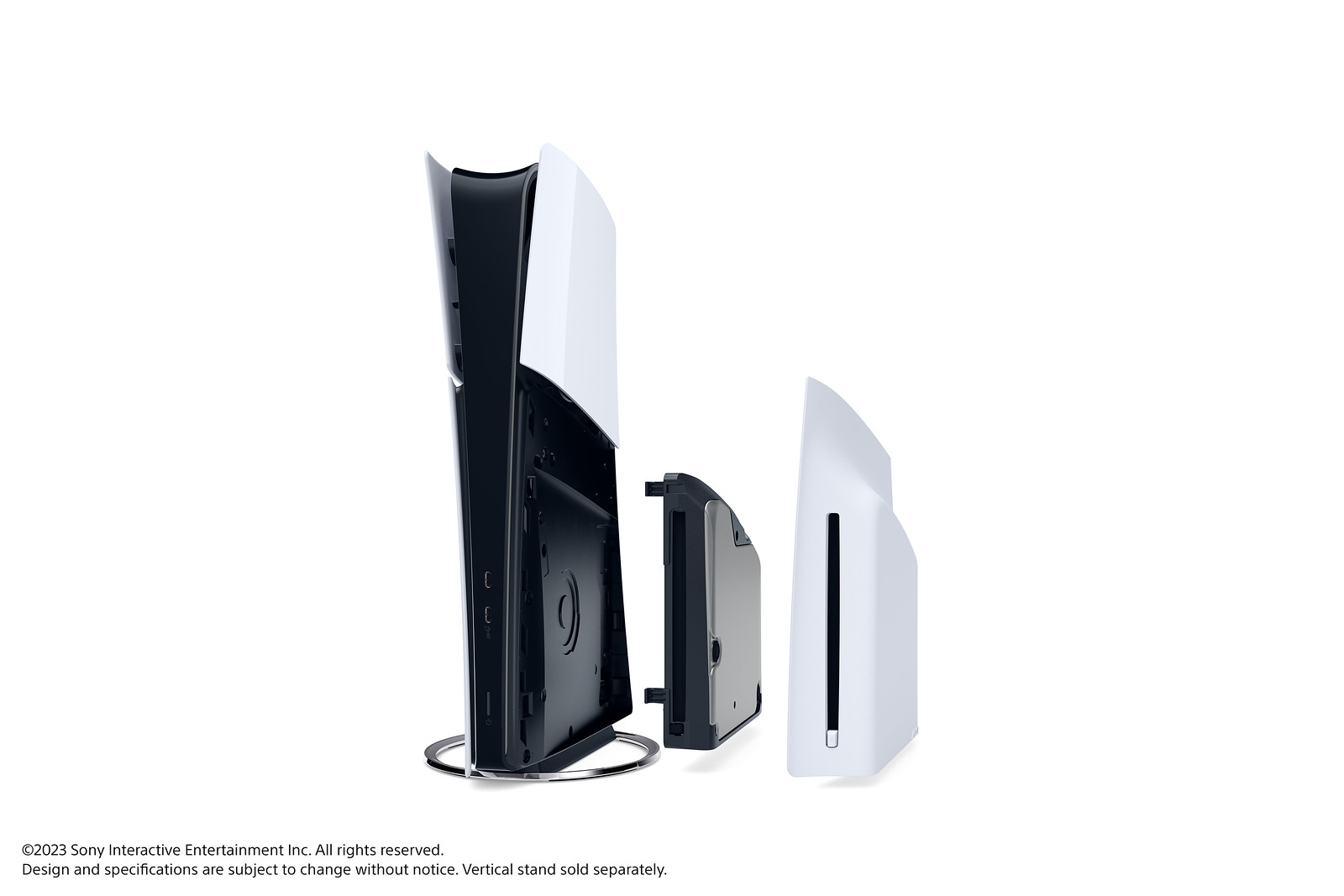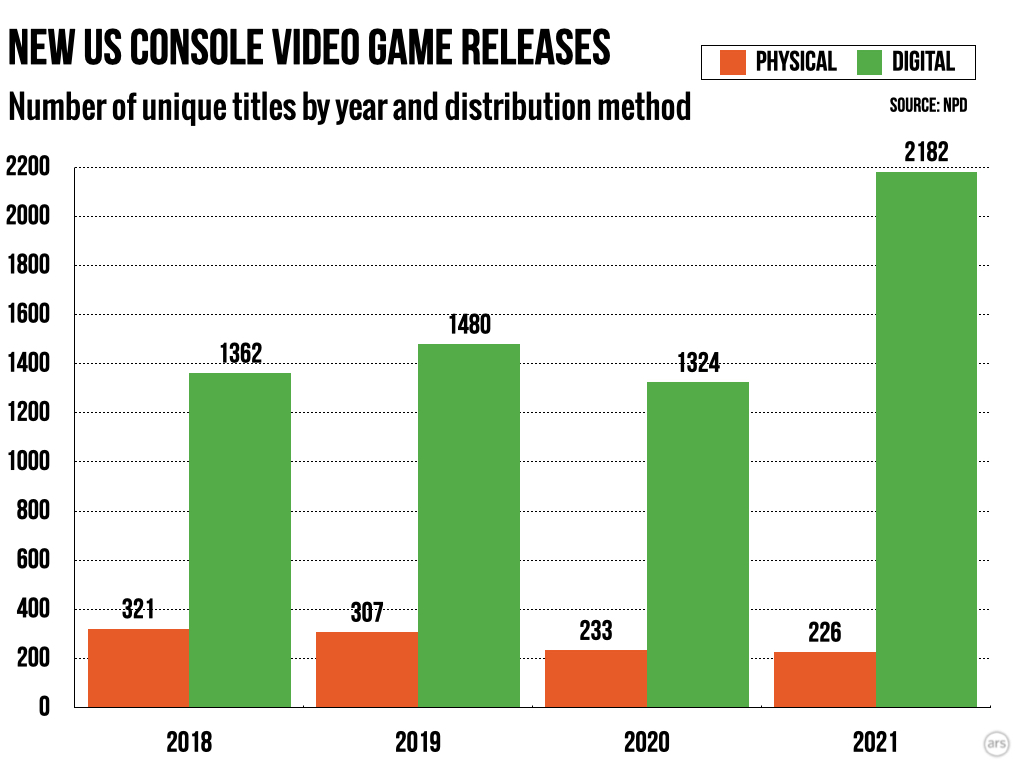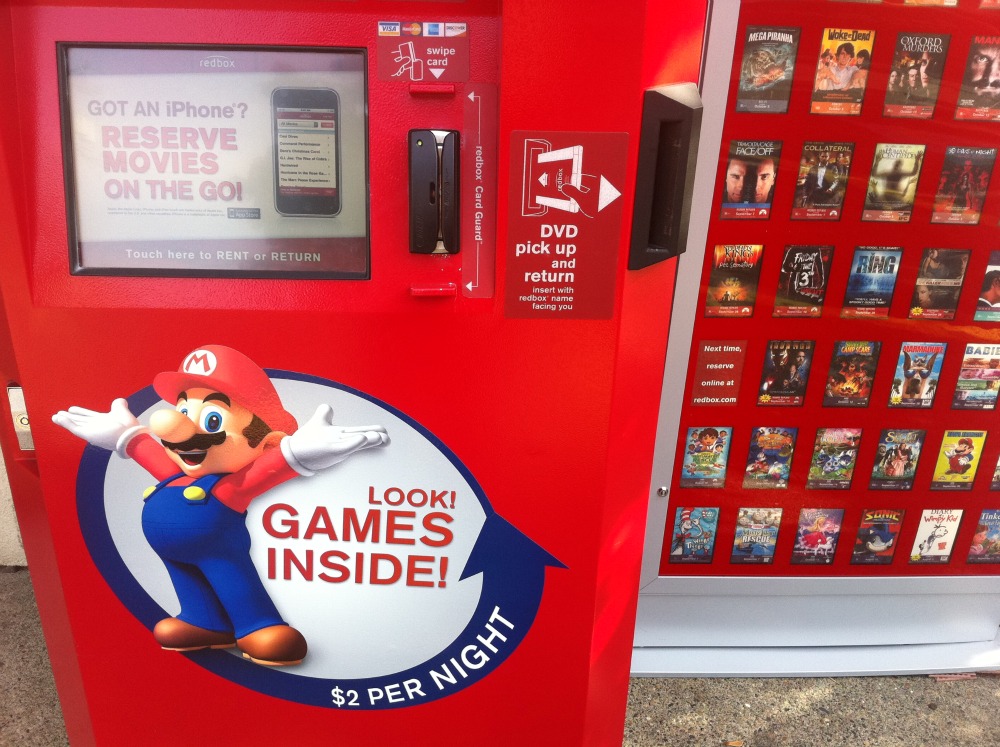Expensive, shiny coasters —
Sony relegates physical game discs to a peripheral afterthought.

Enlarge / Notice anything missing from the one and only model of the PS5 Pro?
Sony
Here at Ars, we’ve been publicly musing about whether the world was ready for a disc-free game console since as far back as 2015. Now, though, the better question might be whether the world ever needs a new game console with a built-in disc drive at all.
Yesterday’s announcement of the PlayStation 5 Pro seemed to treat the existence of disc-based games as an afterthought. You had to be watching pretty closely during Mark Cerny’s “technical presentation” video to notice that the coming PS5 Pro is only available in a single disc-drive-free model. And you’d have to read pretty deep into the official PlayStation blog post on the subject to discover that “PS5 Pro is available as a disc-less console, with the option to purchase the currently available Disc Drive for PS5 separately.”
That $80 disc drive accessory was introduced as an optional upgrade to the Digital Edition of the PS5 Slim last year, alongside a Slim model that does have a pre-installed disc drive. But now, just one year later, Sony has decided that it only needs a single “disc-less” model of the PS5 Pro as the default.

Want to let your Digital Edition PS5 Slim (or PS5 Pro) play physical games? An $80 snap-on disc drive can help with that.
On Microsoft’s side, things seem to be trending away from console disc drives as well. The new Xbox models the company is releasing this holiday season include the first “all-digital” edition of its top-end Xbox Series X, available for about $50 less than the standard edition. Microsoft is also introducing a new “Galaxy Black” Xbox Series X model with a disc drive this holiday season, but it will only be available “in limited quantities,” Microsoft said.
Things have come a long way since 2013, when Microsoft privately mulled a disc-free version of the Xbox One before scrapping the plans because of what Phil Spencer called “bandwidth and game size” concerns (the “All-Digital” Xbox One S would eventually limp out in 2019). Things have even changed considerably since 2020, when Gamestop’s initial allotment of PS5 units was tilted 3-to-1 toward standard, disc-drive-equipped model, according to Ars’ analysis.
A shrinking minority
It’s hard to read too much of the disc-free console hardware trend for the moment. The original editions of the PS5 and Xbox Series X still exist with disc drives, of course. And on Sony’s side, that optional disc drive attachment exists as an important release valve for any PS5 Pro customers who want to pay more to enjoy games on discs.
But Sony’s statistics suggest there’s no need to treat physical game discs as the default anymore. Digital downloads represented 70 percent of PlayStation’s full game sales for the 2023 fiscal year (ending March 2024) and nearly 80 percent of such sales for the April to June quarter of 2024. That’s up from downloads representing 53 percent of PlayStation game sales in the 2019 fiscal year and way up from 19 percent in the 2015 fiscal year.

The number of physical console game releases continues to decline even as the number of digital game explodes.
The numbers are similar across the industry. For years now, most distinct console games have not been released as a physical product, a trend that now includes major games like Alan Wake 2. Third-party publishers like Capcom report that 90 percent of their sales now come from purely digital games. In the UK, downloads represented 82 percent of sales for the most popular new console releases in June 2023.
Given trends and numbers like that, why would Sony or Microsoft think a pre-installed disc drive should even be a relevant option for any gaming console going forward? Why would a console maker assume a critical mass of consumers want to spend an extra $50 or more for a disc drive they may never use?
Why not consolidate down to a single, disc-free model as the default and relegate physical games to “needs a weird peripheral” status? The PS5 Pro’s disc-free release suggests Sony is now ready to treat disc-based gamers like virtual reality fans—a small slice of the market that needs to invest in non-standard hardware to play in their non-standard way.
Long overdue
This doesn’t mean physical games are going away soon. There’s still a sizable minority of gamers who want to own their games on physical media for valid reasons, including collectability, accessibility, and long-term preservation. Major publishers and specialist outfits like Limited Run Games will continue to cater to this market segment for the foreseeable future.

This image, like game rentals as a whole, is now a relic of a bygone era.
When it comes to gaming hardware, though, the final push away from built-in console disc drives as the standard is overdue. On the PC, Steam made buying a disc drive for your gaming rig feel like an anachronism years ago. In music, the iPod and then streaming services have led stores like Best Buy to stop selling physical CDs altogether (though vinyl sales are a small but growing niche). In film, sales and rentals of movies on disc now represent just 3.6 percent of home movie spending, dwarfed by both digital sales and rentals (a combined 10 percent) and subscription streaming (86.3 percent).
Console gaming now seems poised to be the next media format where physical media no longer drives the hardware market. Soon, the idea of a game console with a disc drive may seem as outdated as a laptop with a disc drive or an iPhone with a headphone jack.